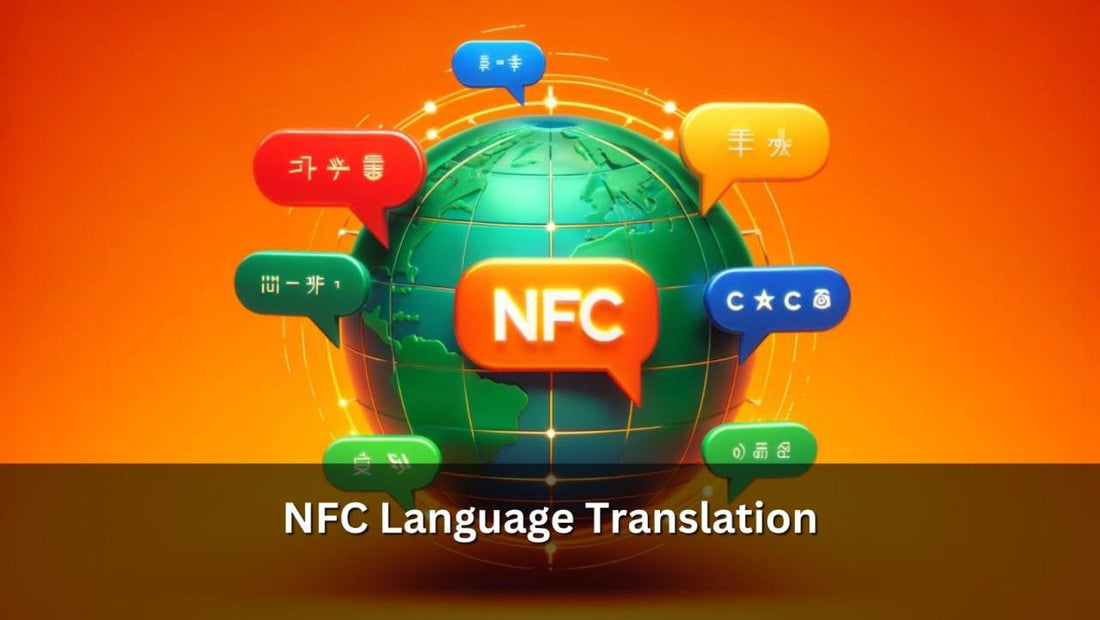NFC Language Translation

Introduction
Language translation via NFC (Near Field Communication) is a rapidly evolving technology that facilitates instant language translation by tapping NFC-enabled devices on tags or other NFC-compatible objects. This innovation is particularly beneficial for travelers, businesses, and educational purposes, providing seamless access to multilingual information without the need for internet connectivity. NFC tags can be embedded in various items such as menus, signage, and educational materials, allowing users to receive translations by simply tapping their device. This ensures that language barriers are minimized, enhancing communication and accessibility across diverse environments (NFC Tagify) (blog.google).

The Basics of NFC Technology
NFC technology allows for short-range communication between compatible devices. When an NFC-enabled device comes into close proximity with an NFC tag, data is transmitted wirelessly. This technology operates within a range of about 4 cm and uses electromagnetic radio fields to enable communication between devices. NFC is widely used in various applications such as contactless payments, access control, and now, language translation. Its convenience and ease of use make it an ideal solution for facilitating instant access to information.
In the context of language translation, NFC tags can be embedded in objects like signs, menus, or brochures. When an NFC-enabled device taps these tags, it retrieves and displays translated content, making information accessible in multiple languages. This application is particularly beneficial in public spaces like museums, airports, and tourist attractions, enhancing the experience for non-native speakers. NFC's ability to provide real-time, offline translations ensures that language barriers are minimized, promoting better communication and accessibility.
How NFC Enhances Language Translation
NFC enhances language translation by embedding multilingual information within NFC tags. When scanned, these tags direct the user to pre-determined translations, which can be in the form of text, audio, or video. This application is invaluable in public spaces like museums, airports, and restaurants, offering instant translations of signs, menus, and informational plaques. By simply tapping their NFC-enabled devices on these tags, users can access translations in their preferred languages, making the information more accessible and understandable.
This technology not only improves the user experience for non-native speakers but also promotes inclusivity and cultural exchange. For businesses, it provides an effective way to cater to a diverse customer base without the need for multiple printed materials. Additionally, NFC tags can store dynamic content that can be updated as needed, ensuring that the translations remain accurate and relevant over time. This seamless integration of technology and language services significantly reduces language barriers and enhances global communication.
Benefits of NFC for Language Translation
NFC tags offer numerous benefits for language translation:
- Instant Accessibility: Users can instantly access translations by tapping their devices on NFC tags, eliminating the need for typing or searching for information.
- Offline Capability: NFC tags work without requiring an internet connection, making them reliable in various settings, such as remote areas or places with poor connectivity.
- Cost-Effective: Implementing NFC tags reduces the need for printed multilingual materials, leading to significant savings in costs and resources. This is especially beneficial for businesses and public institutions aiming to provide multilingual support without extensive printing expenses.
- Enhanced Customer Experience: NFC tags provide a seamless, interactive experience, improving user satisfaction and engagement. By offering instant, accurate translations, users feel more welcomed and understood, enhancing their overall experience and encouraging repeat interactions.
Future Trends in NFC Language Translation
The future of NFC in language translation is extremely promising, with significant advancements expected in AI and machine learning. These technologies are set to improve the accuracy and functionality of translations, making them more reliable and efficient. Dynamic QR codes linked with NFC tags will allow for real-time updates and analytics, enhancing user interaction and providing valuable data for improving services. Additionally, the integration of voice recognition can offer hands-free translation, making the process even more seamless. Augmented reality (AR) can further enrich the translation experience by overlaying translated text onto the real world through AR glasses or smartphone screens. These innovations will make NFC language translation more adaptive, responsive, and immersive, offering users a more engaging and effective way to overcome language barriers. As these technologies evolve, they will continue to transform how we interact with multilingual content in various environments, from museums to restaurants to public transport.
For more information, visit Google Translate Blog.
We at NFC Tagify provide all sort of NFC Solutions or you may contact us: Tel. 01600800080, Email: info@nfctagify.com









